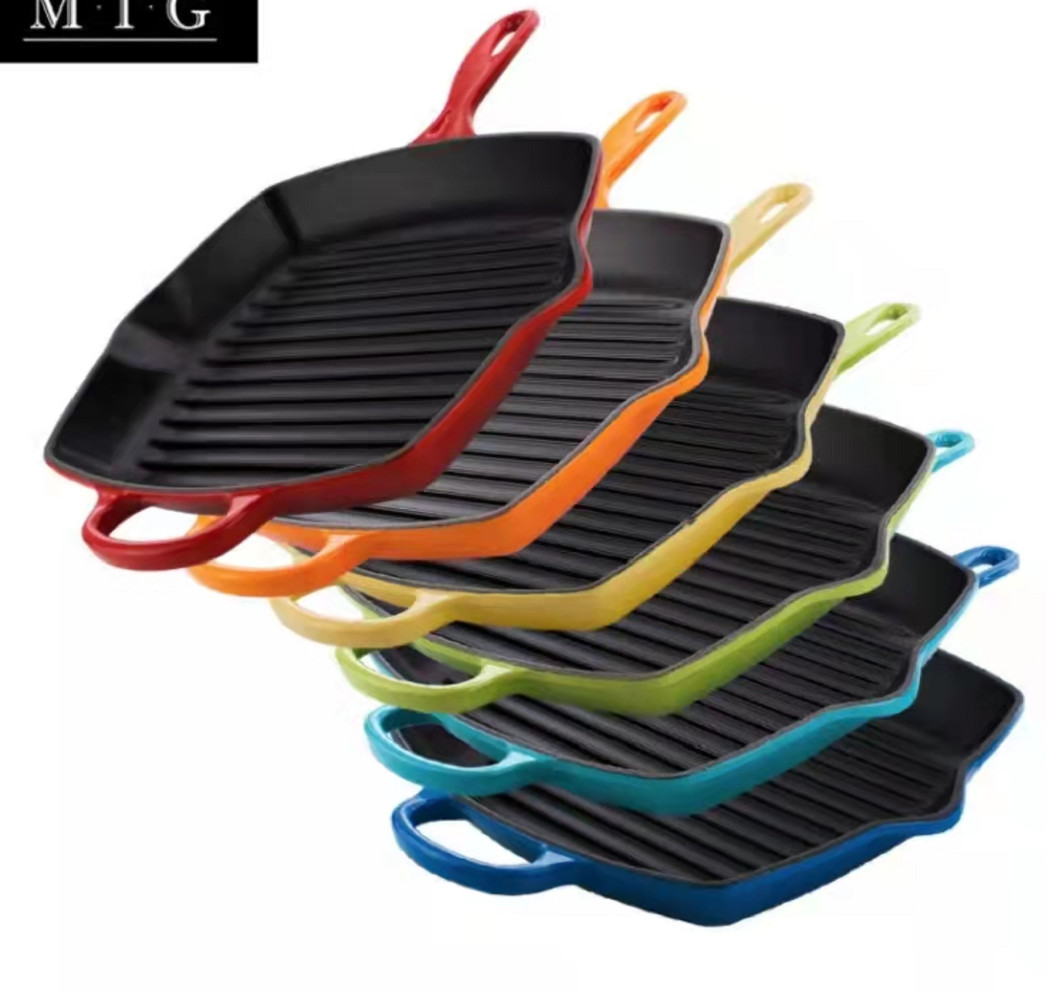- 150m Southwards, West DingWei Road, Nanlou Village, Changan Town, GaoCheng Area, Shijiazhuang, HeBei, China
- monica@foundryasia.com
Novemba . 06, 2024 21:22 Back to list
Top Manufacturers of Mexican Cast Iron Comals for Authentic Cooking
The Art of Crafting Mexican Cast Iron Comal A Look into the Manufacturers
Mexican cuisine is celebrated globally for its vibrant flavors, fresh ingredients, and diverse cooking techniques. At the heart of many traditional dishes lies the comal, a flat, round griddle made of cast iron (or sometimes clay). This cooking tool has been used for centuries in Mexican households, creating everything from tortillas to roasted vegetables. To truly appreciate the art of cooking with a comal, it's essential to understand the craftsmanship behind these iconic kitchen tools, especially those manufactured from high-quality cast iron.
Significance of the Comal in Mexican Cooking
The comal is not just a cooking surface; it represents a rich cultural heritage. It is traditionally made of cast iron, which provides excellent heat retention and even distribution, essential for achieving the perfect tortilla or searing meat. The comal can be used on a stovetop or open flame, making it incredibly versatile. Furthermore, many families pass down their comals through generations, imbuing them with personal history and flavor.
Manufacturing Process of Cast Iron Comales
The manufacturing of cast iron comales is a time-honored process, combining traditional techniques with modern technology. The best manufacturers begin by sourcing high-quality raw materials, ensuring that the finished product is both durable and effective.
1. Molding The first step in creating a comal involves making a mold. Craftsmen often use sand casting, a technique where a pattern is placed in sand to create a mold cavity. This method allows for the production of comales in various sizes, catering to both individual and family needs.
2. Casting Next, molten iron is poured into the molds. The ideal temperature for cast iron casting is around 1,540°C (2,800°F). After the iron cools and solidifies, the molds are removed, revealing the comal.
3. Finishing Touches The comal undergoes several finishing processes, including grinding to ensure a smooth cooking surface and seasoning with natural oils to create a non-stick finish. Some manufacturers even incorporate unique designs, engraving patterns that reflect Mexican culture.
4. Quality Control High-quality manufacturers put their products through rigorous quality checks. Each comal is inspected for any imperfections or inconsistencies, which is vital for ensuring longevity and performance.
mexican cast iron comal manufacturer

Choosing the Right Manufacturer
When selecting a Mexican cast iron comal, not all manufacturers are created equal. It’s essential to consider several factors
1. Reputation Established manufacturers with a history of producing quality products are more likely to deliver a better product. Researching customer reviews and brand history can provide valuable insights.
2. Material Quality The best comales are made from 100% cast iron with no fillers. Look for products that explicitly state they are made from high-quality iron for the best cooking experience.
3. Craftsmanship Handcrafted comales often exhibit superior quality and attention to detail. While mass-produced options may be more readily available, investing in a handcrafted piece can enhance your cooking and provide a unique kitchen tool.
4. Sustainability Many modern manufacturers focus on sustainable practices, using recycled materials and environmentally friendly processes. Choosing a company committed to sustainability supports eco-friendly efforts and community development in Mexico.
Embracing the Comal Tradition
Owning a high-quality cast iron comal is about more than just cooking; it's about embracing a tradition that connects generations. Using a comal can enhance the flavors of your cooking and provide an authentic taste of Mexican cuisine. From enjoying fresh homemade tortillas to cooking dishes like quesadillas and fajitas, the versatility of the comal is undeniable.
In conclusion, the next time you savor a delicious tortilla or any dish cooked on a comal, take a moment to appreciate the craftsmanship behind this essential kitchen tool. By selecting a reputable manufacturer and investing in a cast iron comal, you are not only enhancing your culinary experience but also honoring the rich heritage of Mexican cooking.
-
Best Cast Iron Frying Pan for Induction Cooktop – Durable & Non-Stick Skillet Supplier
NewsJul.08,2025
-
Best Cast Iron Skillet Quality High Performance Cookware for Grill, Pizza, & Stir-Fry
NewsJul.08,2025
-
Premium Cast Iron Pan Set – Durable, Nonstick & Versatile Cookware for All Kitchens
NewsJul.08,2025
-
Blue Cast Iron Dutch Oven – Premium Enamel Cookware for Kitchen & Baking
NewsJul.07,2025
-
Best Enamel Dutch Oven for Bread - White Enamel Cast Iron Dutch Oven Service & Pricelist
NewsJul.07,2025
-
3.5 Qt Enameled Cast Iron Dutch Oven – Durable, Versatile & Stylish Cookware for Every Kitchen
NewsJul.07,2025